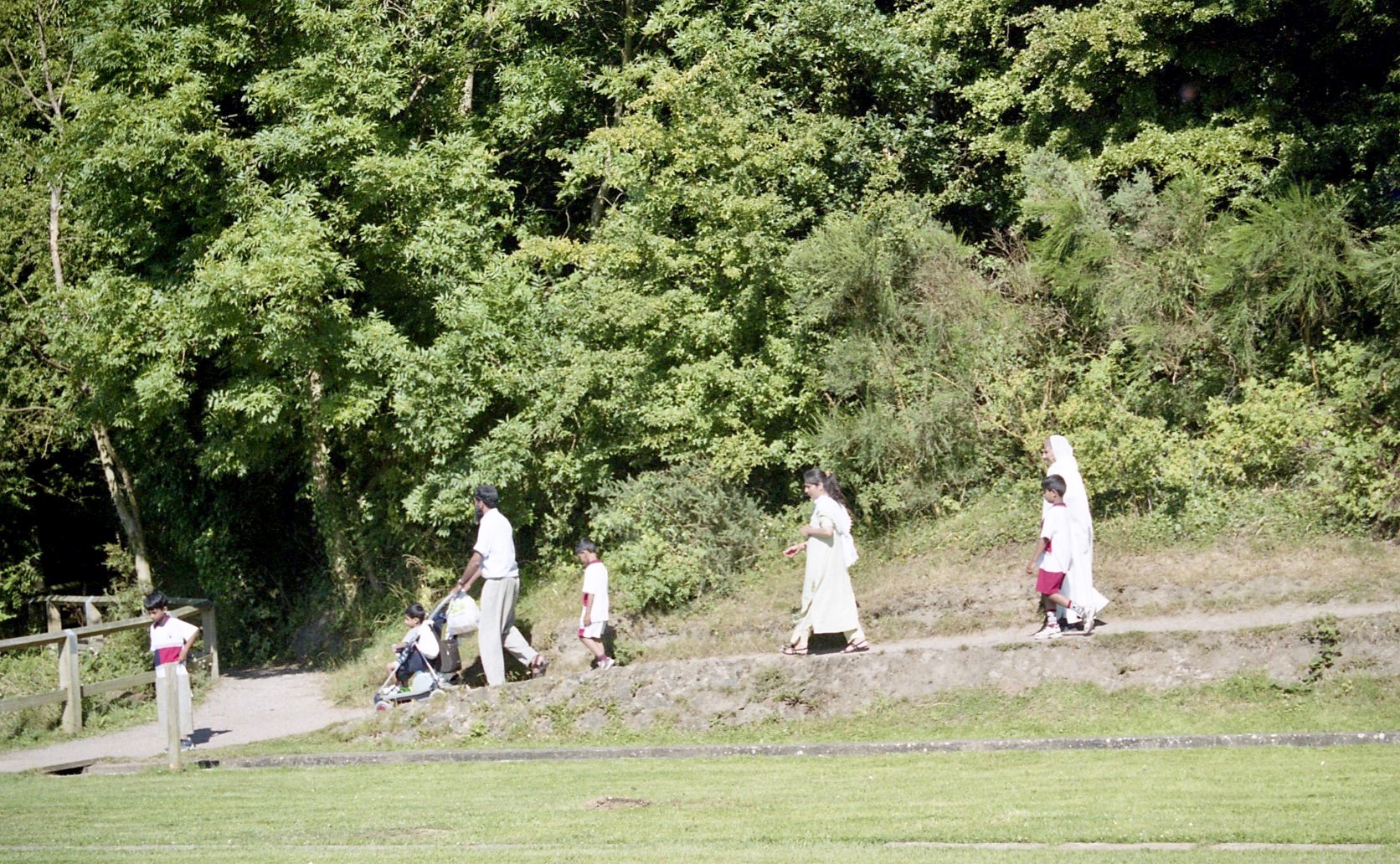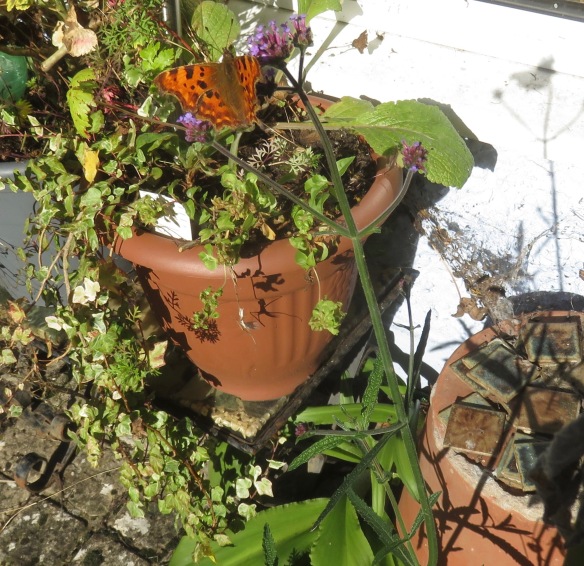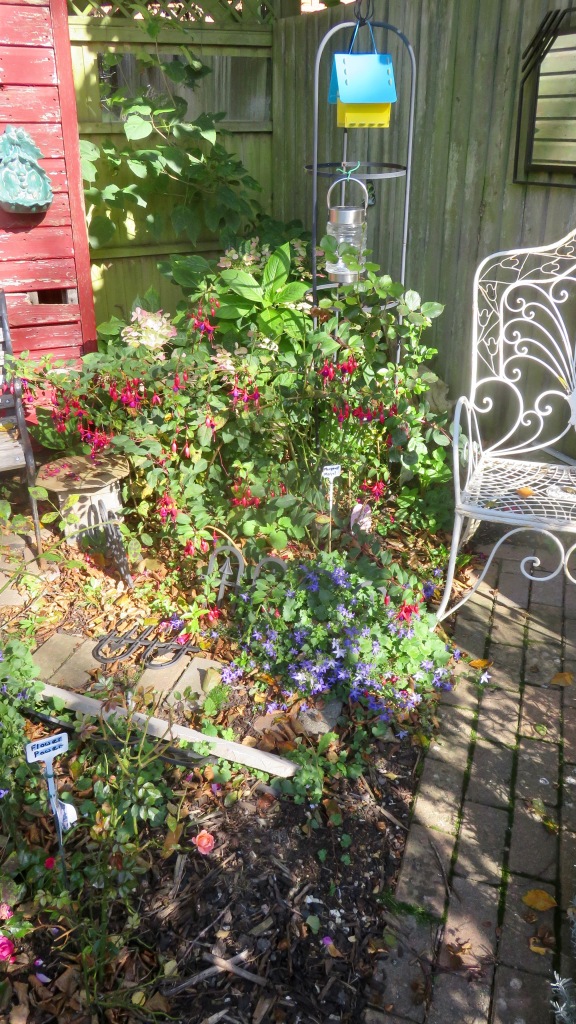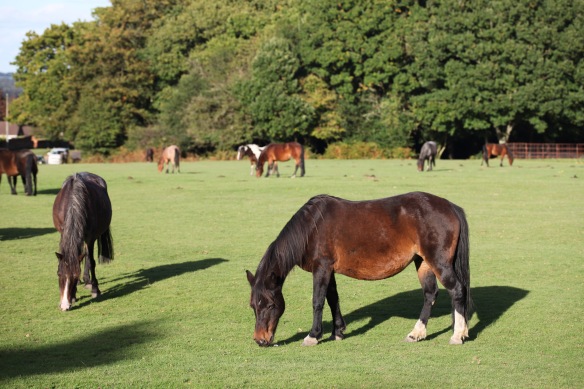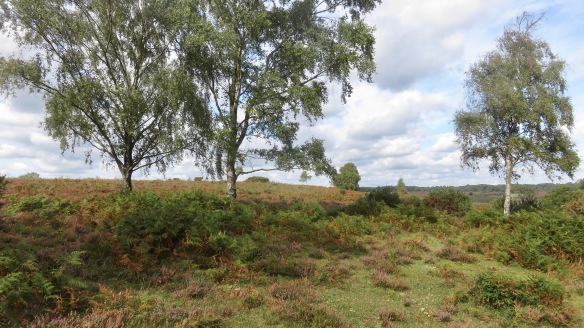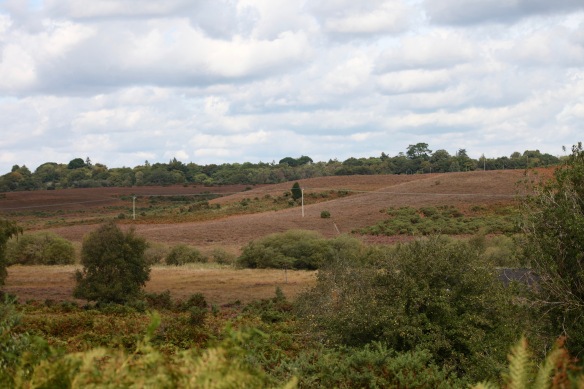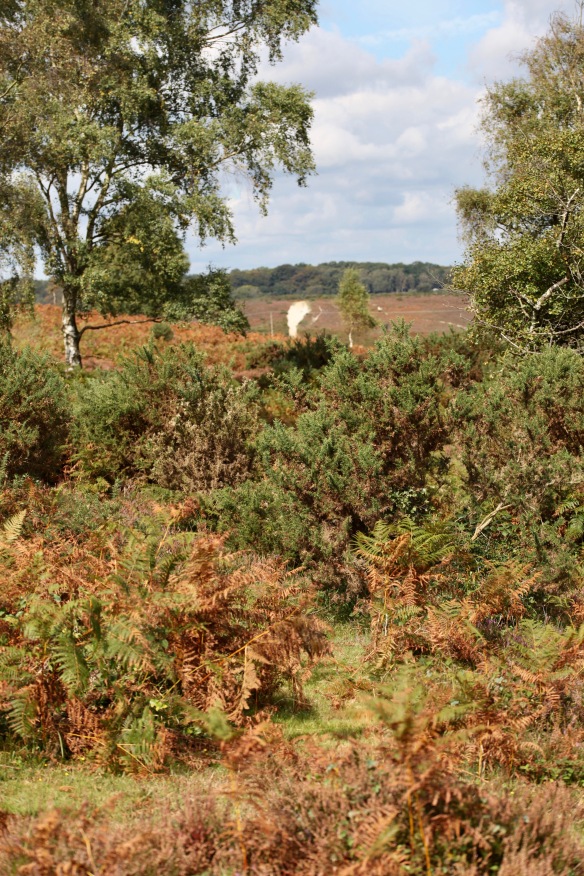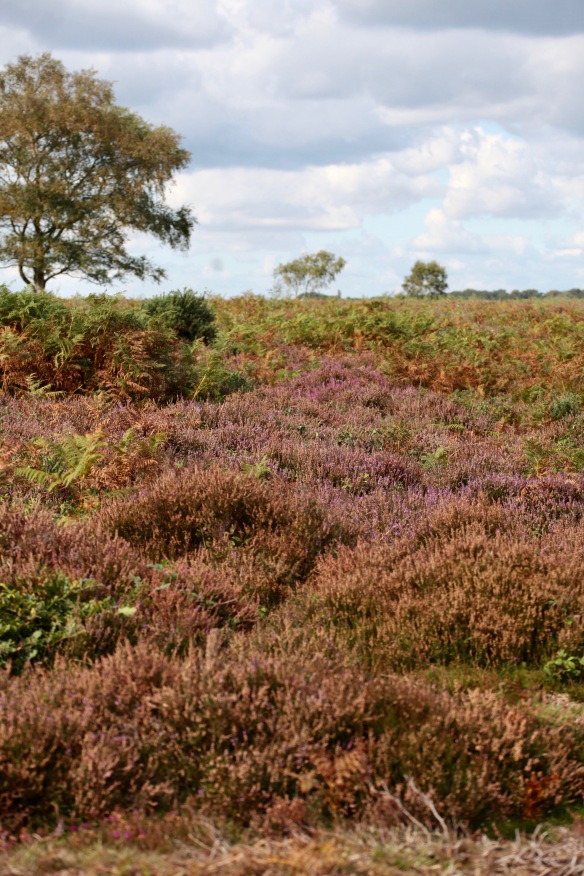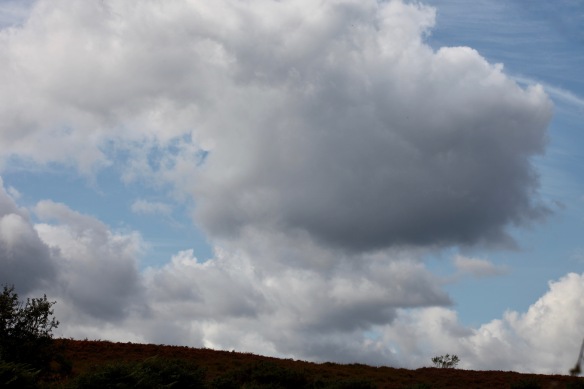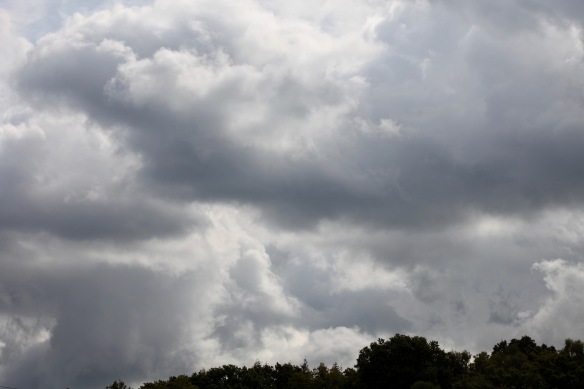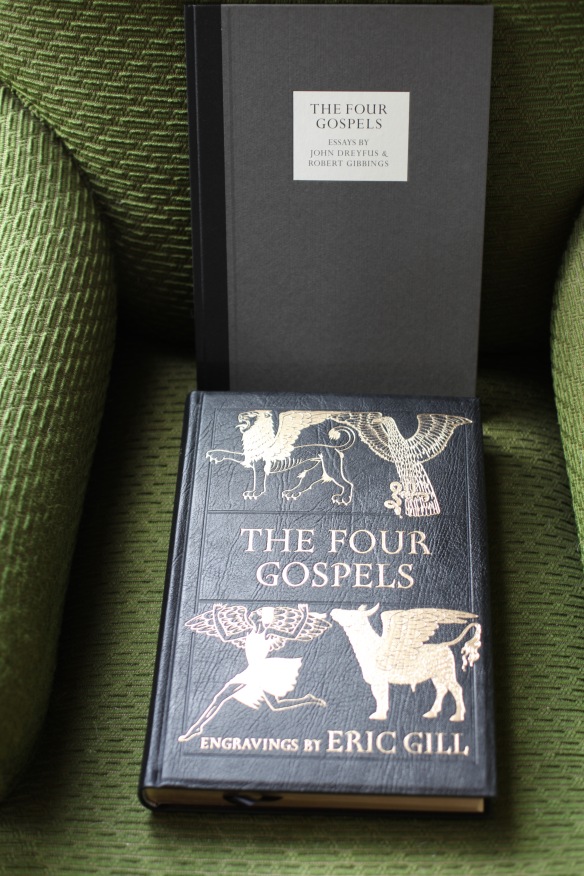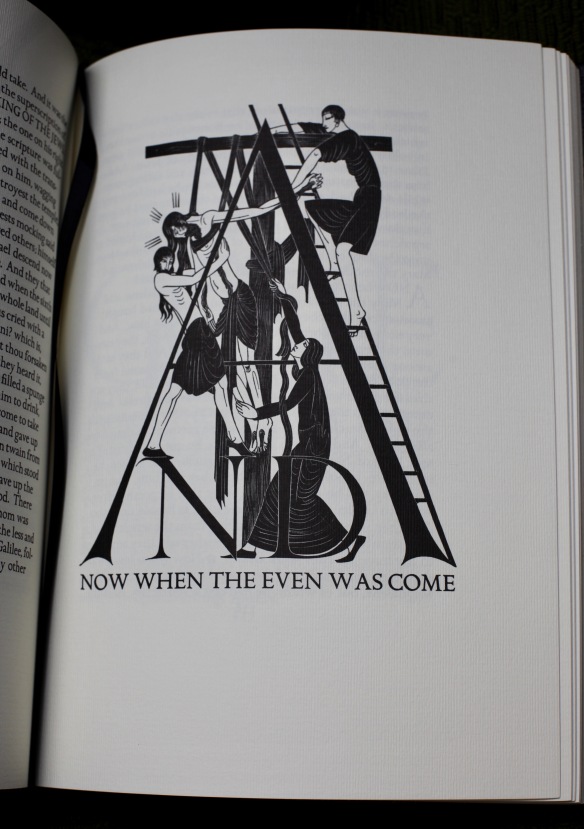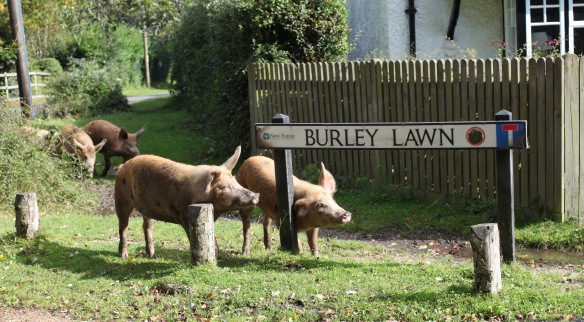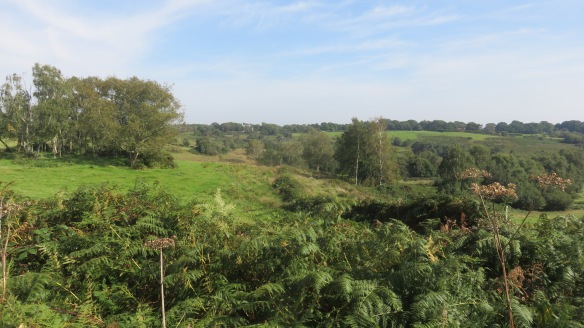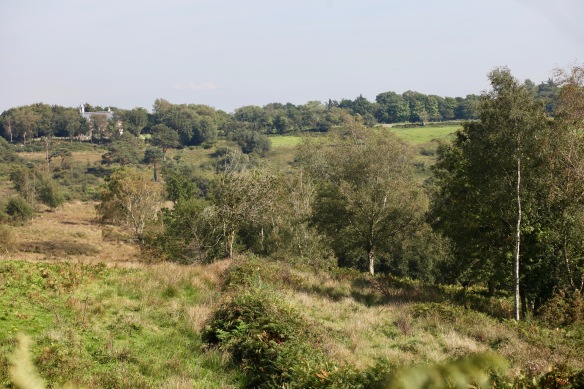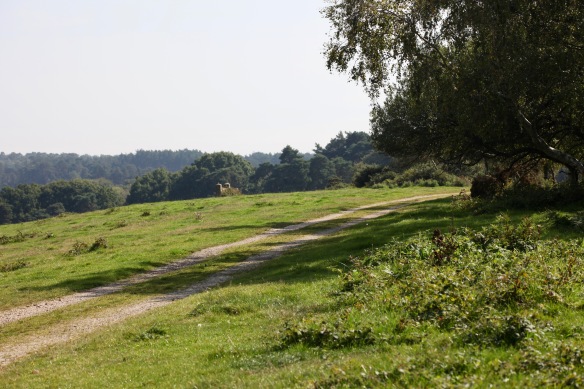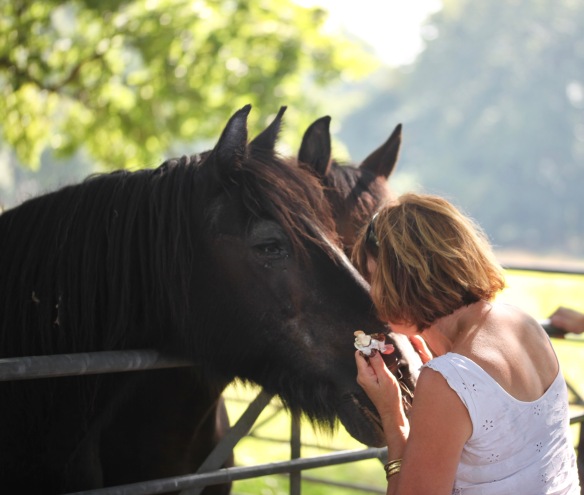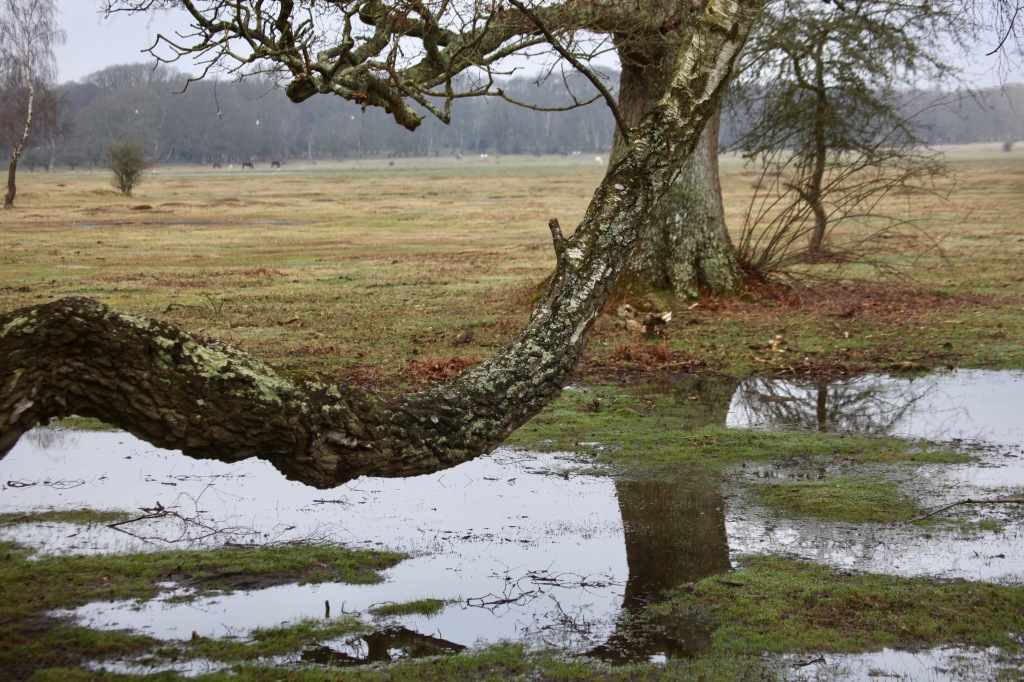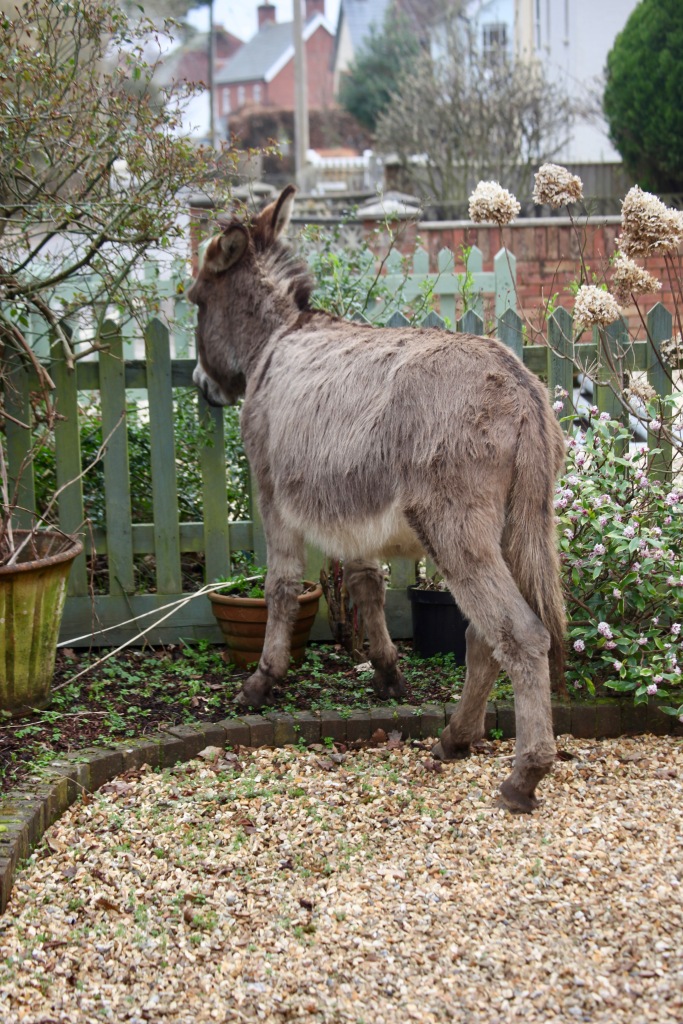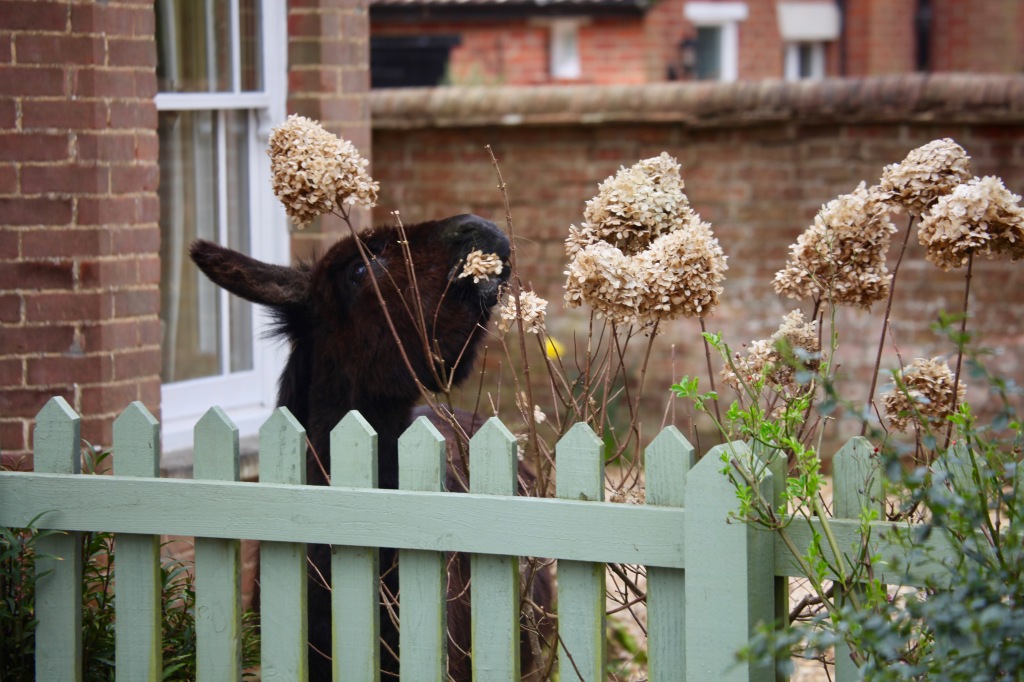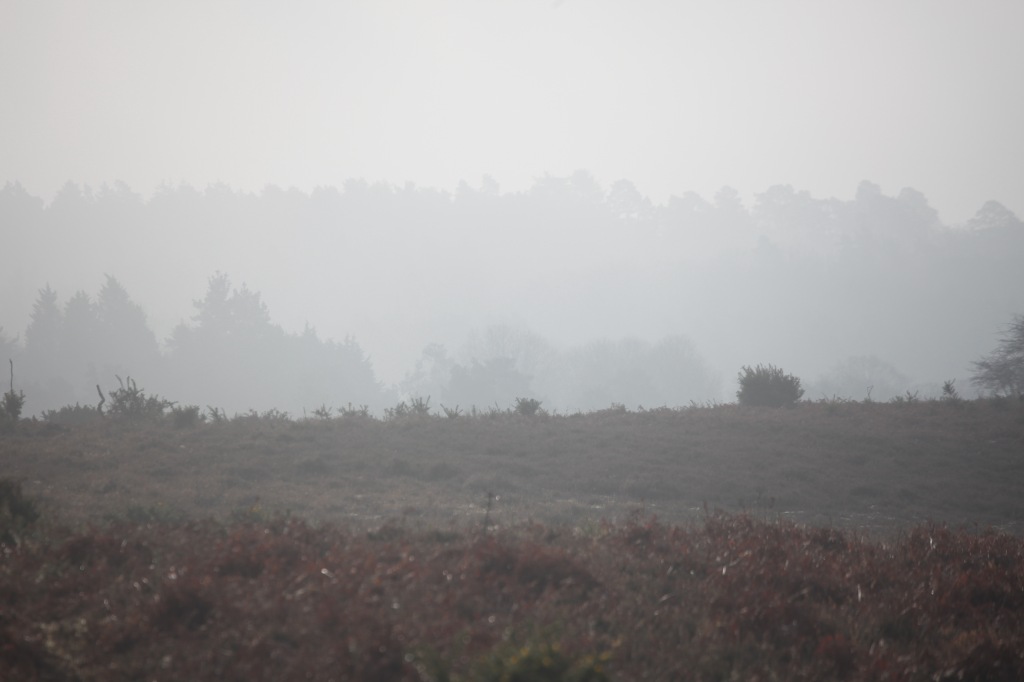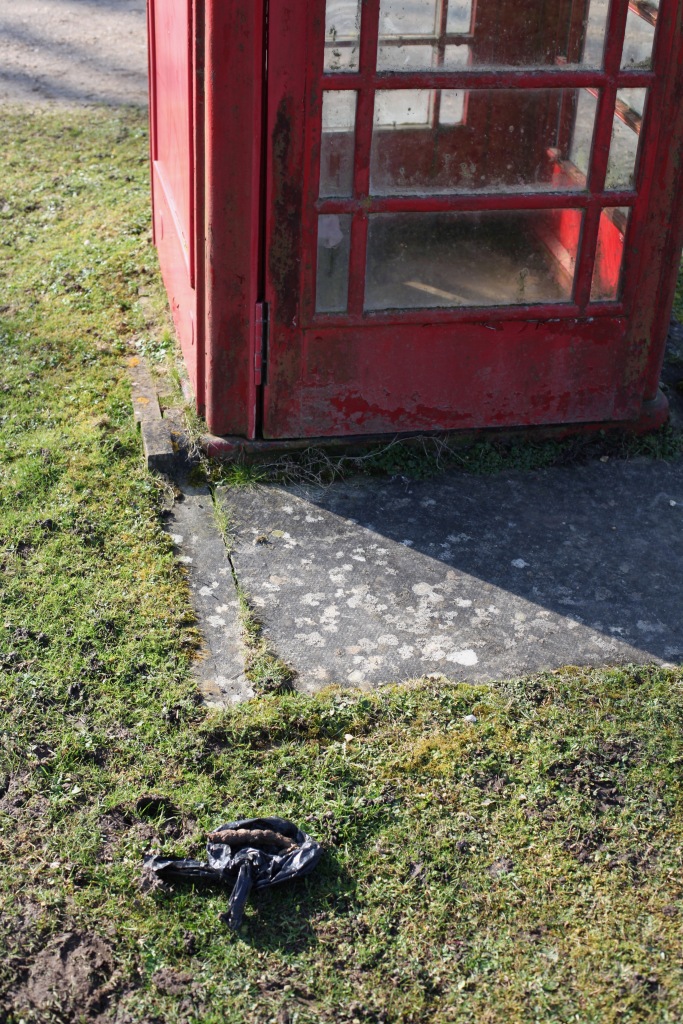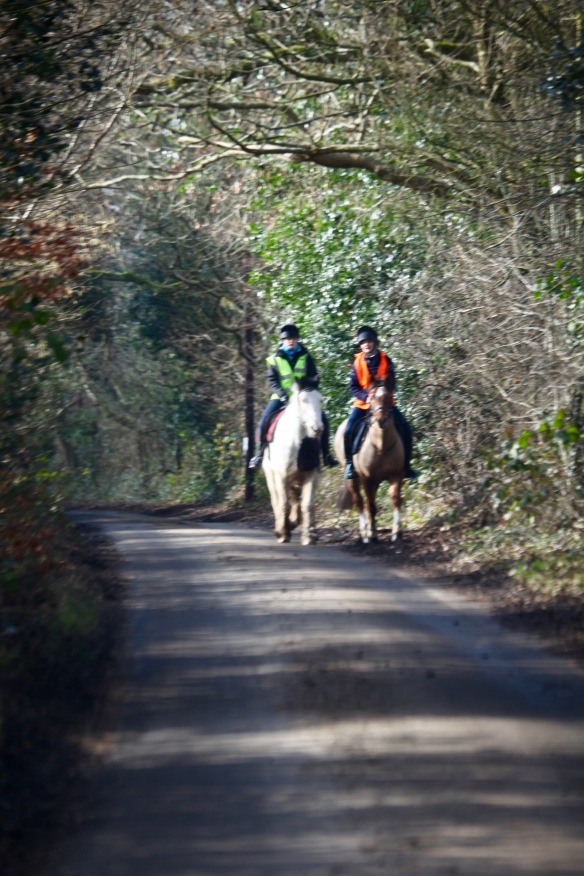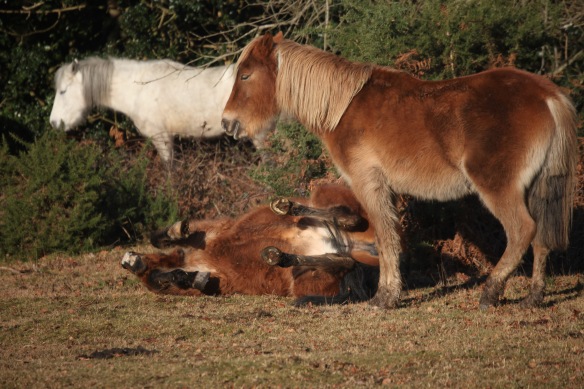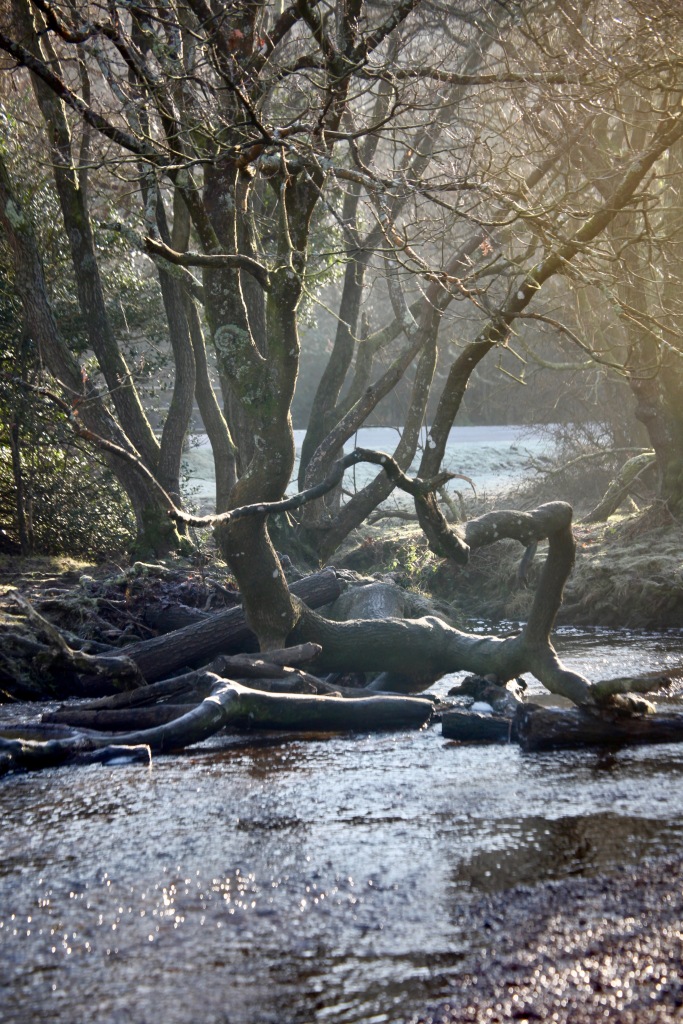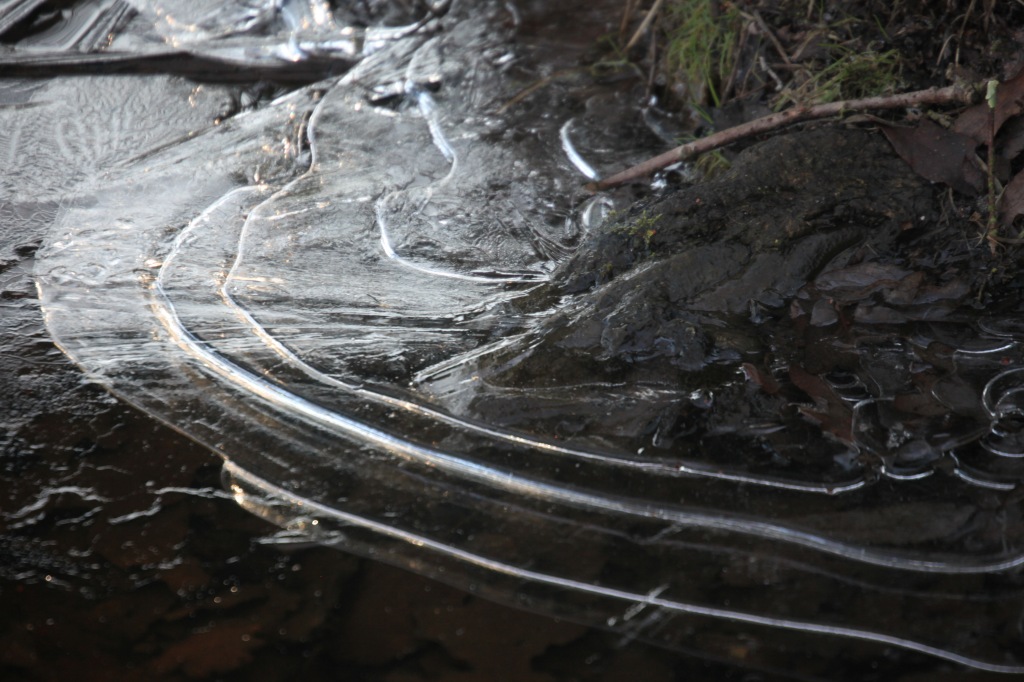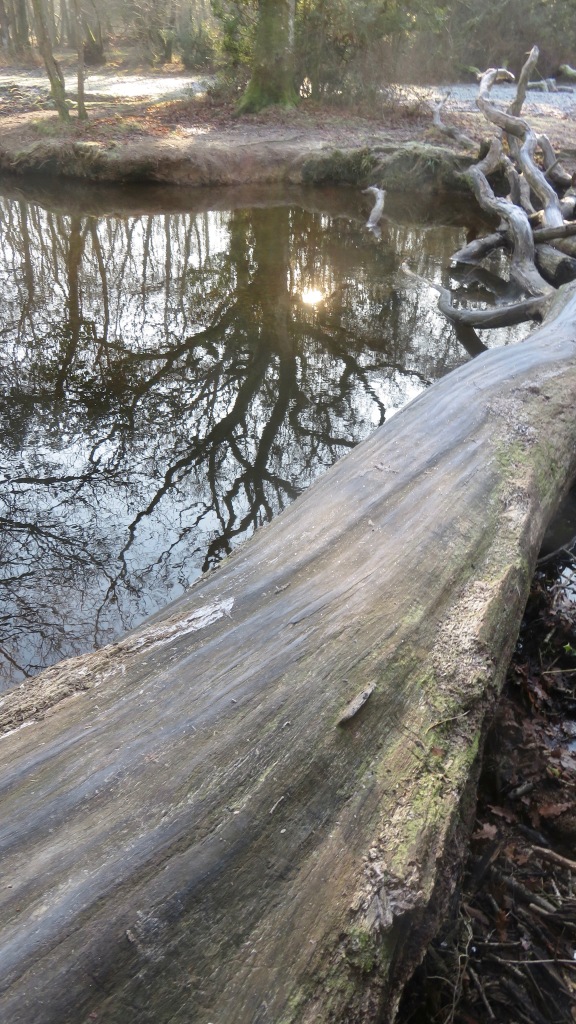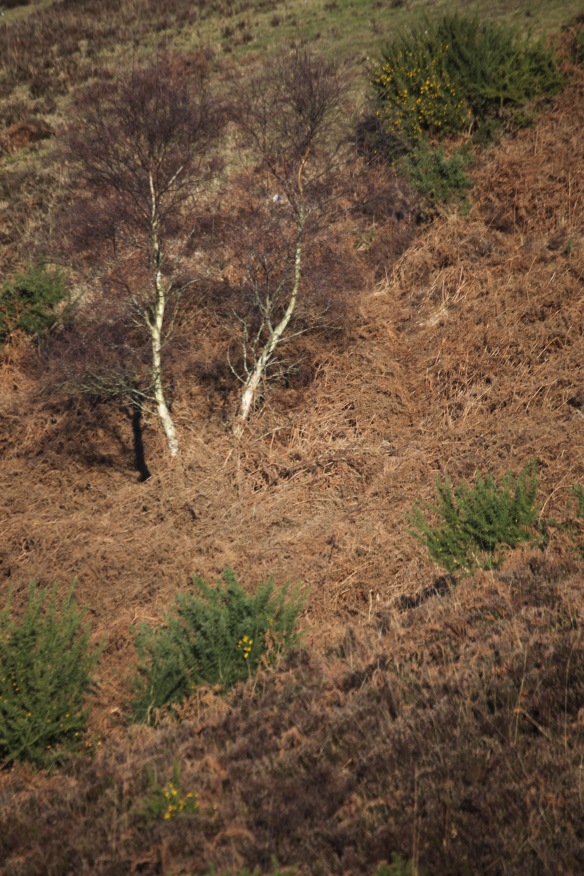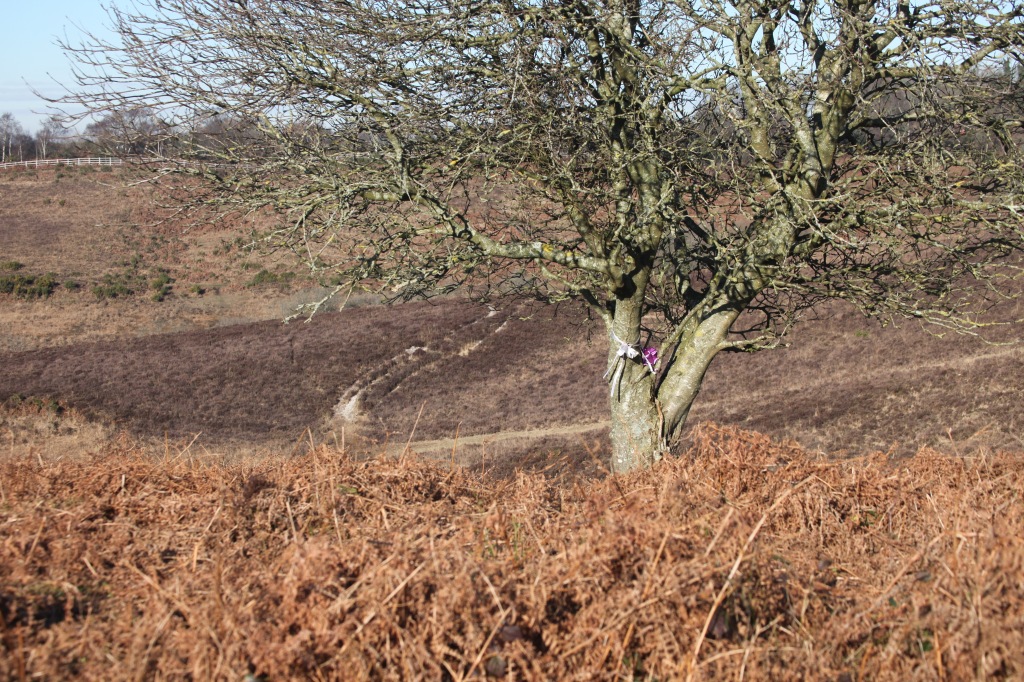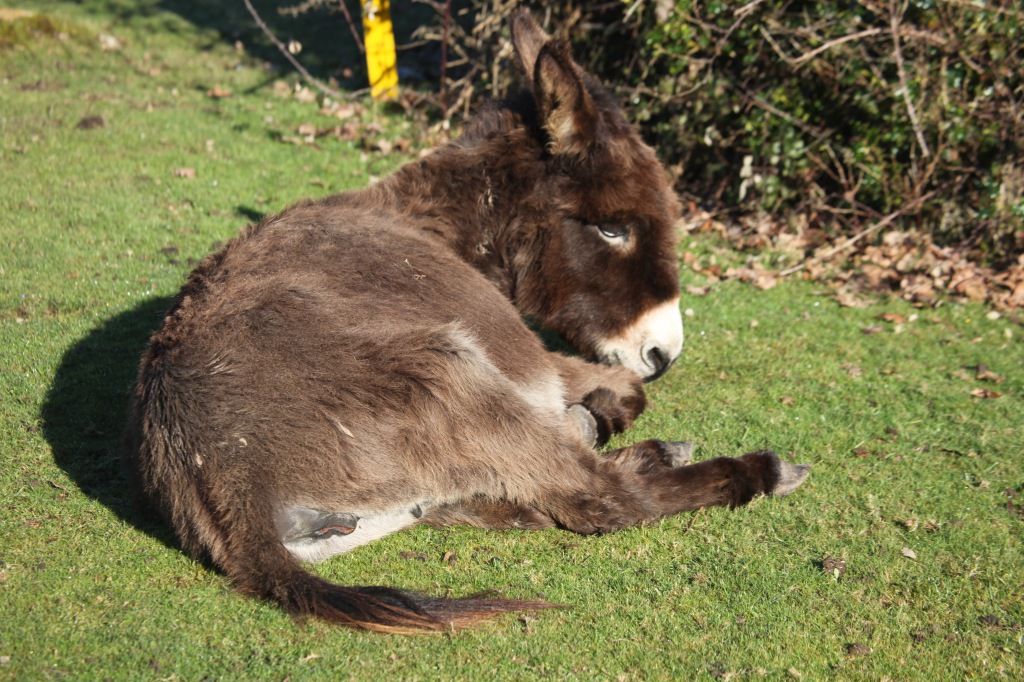CLICK ON IMAGES TO ENLARGE. REPEAT IF REQUIRED.
This morning Jackie drove us around the forest.
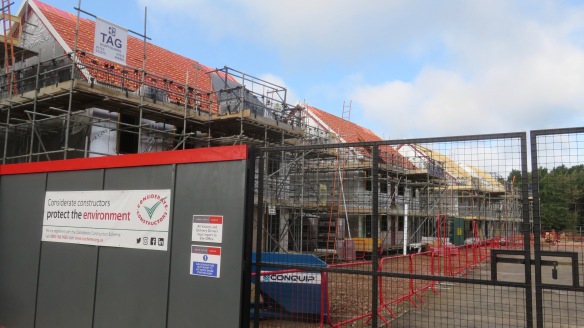


A new residential development is being constructed almost opposite the Parish Church in Hordle Lane.
The builders are 
and, as such post a

On the way to Tiptoe, cyclamen emerge from the verge of Mead End Road;

Gates Cottage lies on a bend;
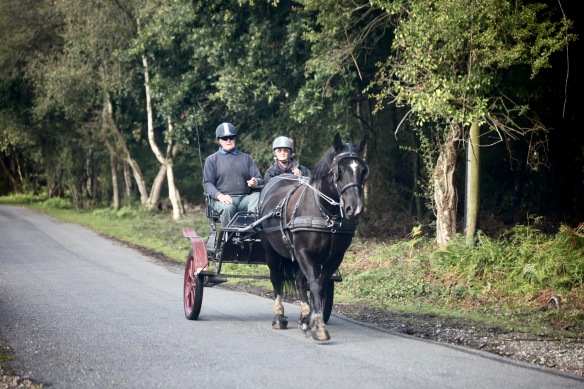
and we exchanged greetings with a couple riding in a trap.


Wobbly Cottage, built on a hill,


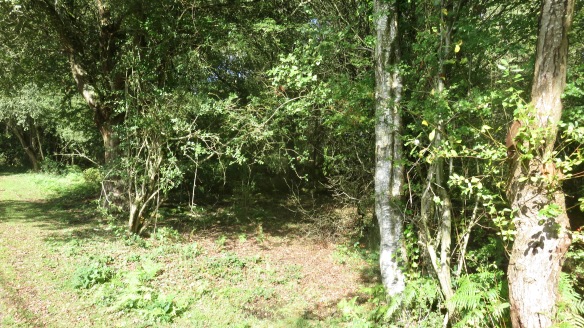
enjoys splendid woodland opposite

and alongside.



A little further along the road, Boundary car park offers splendid views of moorland

to which this horse is being led.
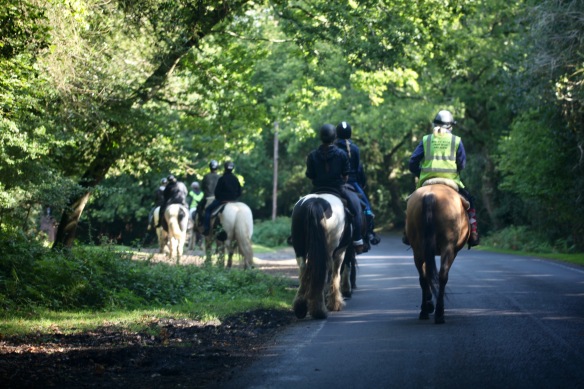
Cyclists were out in force, and outside Burley, pony trekkers adopted their two abreast defensive technique.

Wild ponies, knowing they have the right of way, don’t bother.

Driving through Thorney Hill, Jackie spotted a rather beautiful little church. As we searched for a suitable parking spot, one of two gentlemen clearing a ditch in front of it beckoned to us and opened the gate


leading to the Renaissance style building. We were to learn who was represented by the angles over the circular window and the bell tower.



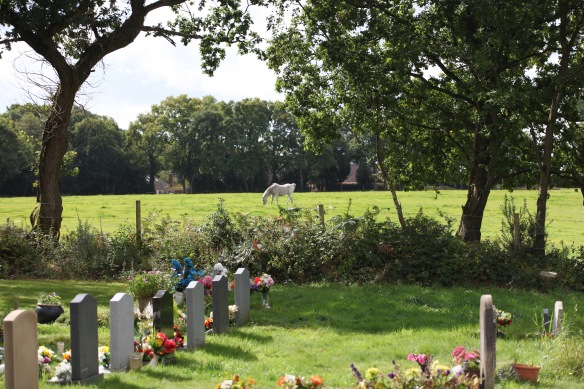
First, we wandered around the graveyard with its New Forest backdrop.
Inside we received a warm welcome by a couple greeting visitors. We had had the good fortune to discover the church on the day it was taking part in the Historic Churches open day. Normally, apart from regular Sunday services at 9.20 a.m. it is only open on Saturday afternoons from May to September between 2.00 and 4.00. The information that follows is gleaned from the leaflet ‘All Saints’ Church, Thorney Hill’.
The church was built for ‘Lord John and Lady Constance Manners. Lady Constance was born Hamlyn-Fane, a family with connections to the Earls of Westmorland.’ ‘The family also owned Clovelly Estate, and it was in All Saints’ Church Clovelly that she married John Masters, 3rd Lord Manners of Foston in 1885.’
‘John and Constance Manners had five children: Mary Christine, twins Betty and Agnes, John and Francis. During a visit to India Mary Christine contracted cholera and died. She was buried in Clovelly, but the family near [their home at] Avon Tyrell [house] and built All Saints’ Church in 1906.’

‘Detmar Blow, believed to be John Ruskin’s last protégé, was commissioned to design All Saints’ Church.’ ‘A sense of space is created by use of both square and round pillars, made from fine Caen stone.’



‘On the two sets of wooden doors are carvings of a cherub face, believed to be that of Mary Christine. On our visit a small spider was engaged in spinning a shroud.

‘A commemoration plaque to her is situated on the back left hand wall. It is carved by Eric Gill and listed by the Tate as among his finest work.
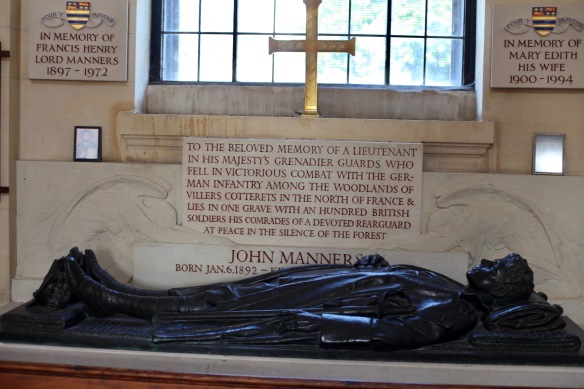

‘Sadness again struck the family when their son John was killed in the first days of the First World War in the retreat from Mons. His body was never found. Constance Manners chose Bertram MacKennal, an Australian sculptor, to make the bronze effigy of John, now placed in the Church. He uses a soldier’s belongings to great effect in the sculpture. The inscription and distraught angels above are carved by Eric Gill.’

A photograph of the young lady stands on the wall above her brother’s monument.
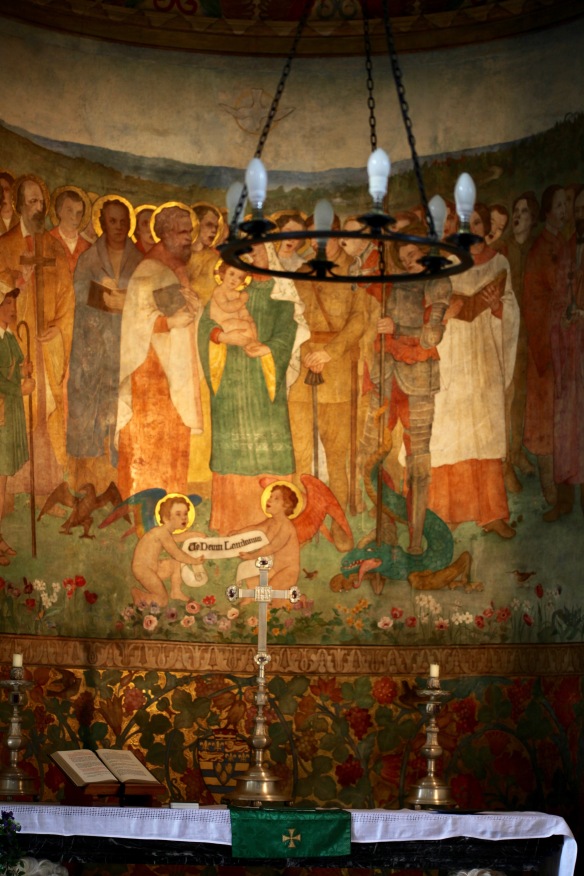
‘The most striking feature in the church is the mural. It was painted in memory of Constance, who died in 1920, by Phoebe Traquair, an Irish lady by birth who lived in Scotland. It is one of only two of her murals in England; all the others are in Scotland. Phoebe was a leading member of the Arts and Crafts movement and worked in many media, including enamelling, jewellery and book-binding. She completed the mural in 1922 aged seventy. The theme is Te Deum – Praise the Lord. As in others of her murals Phoebe Traquair has used the faces of real persons, living and historical, when painting the characters…..quite a few have been identified with varying degree[s] of certainty’ These are available on consulting a key kept in the church.

‘The dome top is painted gold which reflects and gathers the light around a portrayal of Christ in Glory. At his feet are children from Thorney Hill School possibly taken from a photograph of 1922.’

A floral display behind the splendidly original pulpit is perfectly colour coordinated.

I ascended the wooden spiral staircase


to the organ loft

in order to secure an aerial view of the sanctuary through a chandelier.

The circular window behind me focussed on the forest.

The need for the Thieves Beware notice on the front door is made clear in the leaflet. ‘In the last fifty years All Saints’ church has suffered several disastrous events. The lead on the roof was first stolen in 1966. The aluminium which replaced it was found to be perforated with pin sized holes resulting in damage by damp. With the help of English Heritage a lead roof was again fitted in 2005 only to be partly stolen in 2013. Fire has struck several times, fortunately there was time for anything removable to be taken outside. The storm in January 1990 brought down all the trees in front of the church, snapping some of them in half and leaving the church inaccessible for weeks.’
This evening we dined on Jackie’s superb pork paprika, wild rice, green beans, and broccoli. She drank Hoegaarden, and I drank more of the Fleurie.
P.S. My friend Barrie Haynes posted this on Facebook: Thanks for that Derrick, truly one of the wonders of the New Forest. When I was a boy the children of Thorney Hill had a special class at school, as they were a rough lot and smelled! I’m not making this up. There was also a myth that the lady in question was in fact entombed there and because of an expert make over by the embalmer, looked just the same as the day she died. I had lots of friends in Bransgore, but we were warned that the church was haunted and we never went up there after dark! If she was brought back from India to Clovelly it would be very interesting to see the logistics of this operation, the cost must have been enormous but the Manners were never short of a few bob! Hope this is of interest to your readers.


